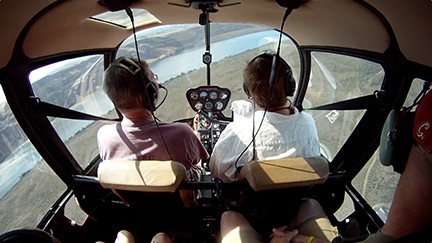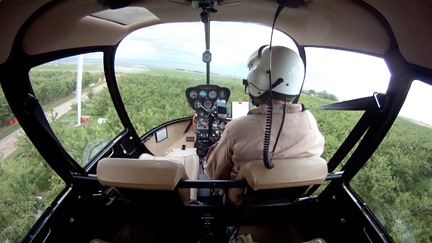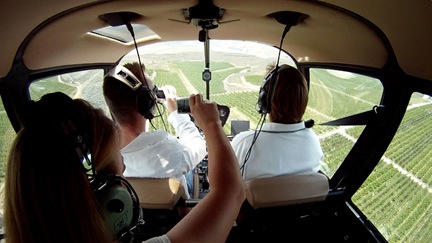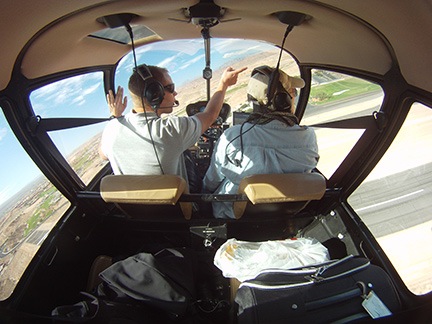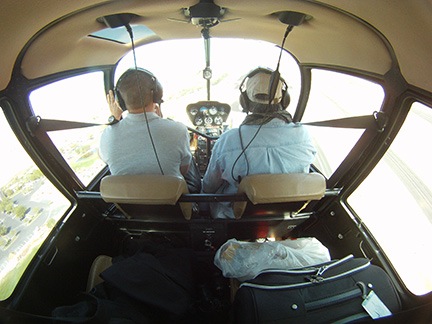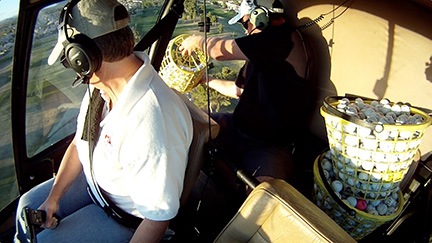What I can tell you from my experience — and how you can avoid having to eat out of a box.
I was a skinny kid, all skin and bones. I was active — all kids who lived in the suburbs were back then — and I had good genes. My dad, after all, was 6’4″ tall and skinny as a pole.
It wasn’t until I got into junior high school that I started filling out. In eighth grade, I was probably close to my full height of 5’8″ and I was wearing jeans with a 31″ waist. I probably weighed about 130 pounds.
My Metabolism and Weight
In 1978, I started college. At the time, I still lived at home in Kings Park, NY on Long Island. I commuted to school in Hempstead, NY, a distance of about 35 miles. I also had a part time job in a clothing store near home and worked about 20 hours a week. Without any effort on my part, all that teen fat fell off me. Indeed, I couldn’t put weight on if I tried. By the spring of 1980, when I finally moved on campus, I weighed 105 pounds. I looked skeletal, like the poster girl for an eating disorder clinic.
The school meal plan cured me. Those warm, soft dinner rolls! The weight came back on slowly. When I graduated in May 1982, I weighted about 130 pounds again. I looked good — even in a bikini, which is hard to imagine now.
Fortunately, my metabolism stayed high throughout my 20s. Unfortunately, I went on the pill, which changes a woman’s normal hormonal balance. I blame that hormone change for the 10 or so pounds I gained in my 20s.
After that, as I aged, my weight rose slowly but steadily, year after year. As many of us age, we become less active. I spent a lot of time sitting in my car commuting or sitting at my desk writing books to earn a living. I wasn’t running around, eating snacks on the run instead of full meals. I had money and could afford to eat well. And I did. Very well.
Hints of a Weight Problem
My husband and I went on a Caribbean cruise back in 2002. It was the same year my brother got married. I was one of the bridesmaids and I had a typically silly dress I had to wear. I took the dress along on the cruise as my “formal wear.” The dress was a size 14 and it was snug. When I got back from the cruise, I tipped the scales at 180 pounds.
Ouch.
I started watching what I ate. I got my weight down to the 170-175 pound range. If you looked at me, you wouldn’t say, “She’s fat.” You’d say, “She’s a big girl.” I was.
My husband, in the meantime, had also porked up a bit. He was weighing in a little over 200 pounds. He’s 5’10” tall and was always very athletic. But by that time, we’d moved to Arizona where he couldn’t participate in the men’s sports he’d enjoyed back in New Jersey. He was losing muscle tone. Nothing serious, but we both noticed it.
We got on Atkins. Atkins is basically a zero-carb diet. And you can say what you like about its nutritional value or faults, but if you stick to it, it works. In a very short period of time, he got down to about 180 pounds and I got down to 160.
 That’s where I was when I worked as a pilot at the Grand Canyon in the summer of 2004. 160 pounds is a perfect weight for a helicopter pilot. It’s light so you can take on more passengers, cargo, or fuel. But it’s not too light to fly solo in most helicopters without adding ballast.
That’s where I was when I worked as a pilot at the Grand Canyon in the summer of 2004. 160 pounds is a perfect weight for a helicopter pilot. It’s light so you can take on more passengers, cargo, or fuel. But it’s not too light to fly solo in most helicopters without adding ballast.
As for Atkins, it might work, but it’s a horrible diet for life. I simply couldn’t stick with it.
Body, Mind, and Weight Changes
In 2006, I was diagnosed with a tumor in my uterus. The “cure” was a radical hysterectomy — they basically cut me open and took out all my internal reproductive organs. (I have a cesarean scar without ever having had a baby!) Losing these parts wasn’t a huge deal for me, since I didn’t plan to have children. But it did push me through menopause at age 44.
Fortunately, the tumor was not malignant and I didn’t need any further treatment for it.
Unfortunately, menopause is a huge change in a woman’s body chemistry. Without certain hormones being produced, metabolism changes. Or at least that’s what seems to happen. I certainly porked up afterward, shooting back up to 180 pounds in no time.
Time marched on. My life changed. My relationship changed. I worked hard to keep my weight from rising. But this past winter, when I was back in Arizona, away from my friends, in a dying marriage, I ate for comfort. I ate too much. I ate the wrong things.
And I gained weight. When I left Arizona in May, I was 195 pounds.
And I could see it. Not only were all my clothes tight — some too tight to wear! — but when I looked in the mirror, I looked like an overweight, middle-aged woman. This only fed my overall feelings of depression from loneliness and my dismal marital situation.
Knowing How Much is too Much
There are lots of resources on the web to help you understand what you should weigh and why. Many of those resources go into topics like Body Mass Index and take age and other factors into consideration. I’ll keep things simple here and concentrate mainly on weight.
 The Rush University Medical Center publishes a simple table of healthy weights. I took the numbers on the Female side of the table, fed them into Excel, and got the following simple chart. A healthy weight is between the two colored lines for your height.
The Rush University Medical Center publishes a simple table of healthy weights. I took the numbers on the Female side of the table, fed them into Excel, and got the following simple chart. A healthy weight is between the two colored lines for your height.
According to this data, I should weigh 126 to 154 pounds. I was 41 pounds overweight. Ouch!
 The U.S. National Institutes of Health (NIH) has a bunch of information about healthy weight. Its Healthy Weight Tools page includes a link to a BMI Calculator. Using this calculator for my maximum healthy weight (per Rush University’s table), my BMI would be 23.4, which is considered within “Normal” range. So is 160 pounds, which is what I wanted to be.
The U.S. National Institutes of Health (NIH) has a bunch of information about healthy weight. Its Healthy Weight Tools page includes a link to a BMI Calculator. Using this calculator for my maximum healthy weight (per Rush University’s table), my BMI would be 23.4, which is considered within “Normal” range. So is 160 pounds, which is what I wanted to be.
I should mention here that the added weight was also causing health problems. Although high blood pressure and stroke run in my family, it wasn’t until I gained all that weight that my blood pressure rose beyond what’s healthy. My fear of stroke — and my desire to keep working as a pilot — forced me to get it under control with medication. I’m not a big believer in taking pills and it bothered me that I had to rely on them to keep healthy.
My Solution: Medifast
With the blood pressure situation on my mind and a divorce looming, I realized that I had to take action. I needed to take control, lose weight, and get healthy again.
Around this time, I ran into my friend Mike T. Mike’s a pilot with US Air. He’s in his late 50s and was always a big guy. I hadn’t seen him for at least two years, although we were sometimes in touch via email. When I ran into him at an FAA meeting at PHX tower, he looked remarkably different. Turns out, he’d lost 80 pounds.
Mike wound up working with me in Washington on my cherry drying contracts. When he brought his helicopter up in May with his wife and a friend, we all got together with another pilot friend, Jim, for dinner in Mattawa, WA. That’s when I discovered that his wife had lost 70 pounds. That’s right: between the two of them, they’d lost what I should weigh.
How did they do it? Medifast.
They told us a little about it at dinner. Cheryl (Mike’s wife) is a “health coach.” You can read her story on her “Take Shape for Life” website. You can also see before and after photos of her and Mike. She didn’t try to sell it to either me or Jim (who is also overweight). But by the time dinner was over, Jim was thinking hard about it. A few days later, he’d signed up. A week later, I signed up.
Medifast is a combination of specially formulated, packaged foods with a meal plan. You eat six (yes, six) meals a day. Five of those meals come out of boxes. The sixth meal is a “lean and green” that consists of lean protein (meat, chicken, or fish) plus a low carb green vegetables.
As I mentioned elsewhere, most of the box items are powder or powder plus other ingredients. You add water, then either shake, cook, or microwave. Some of the items are prepared, like snack bars or crackers. There’s a decent variety of items, so you don’t have to eat the same thing all the time.
The important part of the plan — which I didn’t understand at first — is not how much you eat but how you spread those meals out throughout the day. Generally speaking, you need 2 to 3 hours between meals. I try to eat at 6 AM, 9 AM, noon, 3 PM, 6 PM, and 9 PM.
At first, the plan was very difficult for me. I’m a foodie and love to eat good food. Although many of the Medifast options are palatable, I could never call any of them good. (Well, maybe the chocolate pudding.) I’m also a big eater and when you put a big plate of tasty food in front of me, I’m more likely to clean that plate than leave anything on it. And the Medifast meal portions are small.
The meals are formulated to be low in calories, fat, and carbs. For example, I had chocolate chip pancakes for breakfast. (Well, technically it’s pancake because I make one big one.) 90 calories, 1/2 gram fat, and 11 grams net carbs. The shake I just had for meal #2 is 110 calories, 1 gram of fat, and 9 grams net carbs. The chocolate pudding I like so much is 110 calories, 1 gram fat, and 11 grams net carbs. At the same time, the meals are fortified with vitamins and minerals so you’re sure to get required nutrients.
So what the plan does is spread a small amount of nutritionally balanced caloric intake throughout the day. Your body is eating less, but it never tells itself to go into “starvation mode” and burn muscle instead of fat. And the nutrients are there, so you really never feel like you’re dieting. With normal activity (or a little extra exercise) and a lot of water to stay hydrated and flush your system out, the fat falls off.
Really.
And the good part about all this is that over time, you get used to the box food and eating less. So while the first month was miserable for me, the second was easier. I’m halfway into month 3 now and I’m not suffering at all.
I should mention here that I don’t stick to the plan like glue. Occasionally, I’ll go out to eat with friends and eat a salad that isn’t exactly a “lean and green” meal. In every single case, I’ll only eat half of the restaurant portion and bring the other half home for the next day’s lean and green meal. Amazingly, half a restaurant salad satisfies me now. I’ve cut back on my wine consumption — I probably drink just one glass a week now. And although fruit is verboten, you can’t stop me from eating fresh cherries and blueberries that I pick myself every evening.
My results? Well, I weigh myself daily and write down the results on a chart I keep on the back of the medicine cabinet door. The results either motivate or scold me. Over time, they’ve motivated me to stick with it. I also measure my bust/waist/hips once a month.
I fed the weight numbers into an Excel spreadsheet and charted them. I also did some math on the measurements.
Drum roll, please….
 In 2-1/2 months, I’ve lost 28 pounds and a total of 11 inches, 7 of which are from my waist. I am less than 8 pounds from my goal weight of 160 pounds and am considering taking it all the way down to 150 — a new goal I’m confident I can reach.
In 2-1/2 months, I’ve lost 28 pounds and a total of 11 inches, 7 of which are from my waist. I am less than 8 pounds from my goal weight of 160 pounds and am considering taking it all the way down to 150 — a new goal I’m confident I can reach.
I feel great! I have lots of energy and (other than bouts of depression caused by my divorce woes) feel really upbeat and happy. I feel positive about my health and my future. I’ve even gotten off one of my blood pressure meds.
My clothes are no longer tight. In fact, some have become so loose that they look silly on me. My big reward when I reach my goal weight is the new wardrobe I’ll be buying. That and the ability to get into a few pairs of old jeans in my closet back home.
I can honestly say that losing weight was one of the best decisions I made in my life. I only regret that I let my body get to the point where it was necessary.
And yes, you can expect some “after” photos when I reach my goal. There are no “before” photos since I really didn’t want my photo taken when I was at my heaviest. In a way, I wish I had a fatty picture to share. It would remind me of the place I never want to be again.
I’ll also fill you in on my transition off the box food to regular food. Although I had my doubts in the beginning, I now think can do it. We’ll see.
Jim’s Results
Oddly, as I was writing this post, Jim called. I’d forwarded him a link to the weight table I mentioned earlier, along with my current status. He wanted to congratulate me.
We both had the same goal: to be 160-pound pilots. He’s now below that goal and shooting for 150. His wife just got on the program and has begun to lose weight, too. They’re supporting each other for better health.
Don’t Let It Happen to You!
Of course, I got fat by letting the weight creep up slowly throughout years and years of my life. I think this is what happens to many people — especially those who don’t have weight problems when they’re young and more active. A pound here, three pounds there, five pounds over the holidays that don’t all come off in the spring. It all adds up. You can accept these small weight changes because they’re small. But they’re also insidious. And if you let them, they’ll destroy your health and well-being.
My advice? Consult a reputable healthy weight chart to see what you should weigh. If you’re just a little bit more than that, begin changing your eating habits to eat less and to eat smarter. Just avoiding high carb foods like bread, potatoes, and pasta should be a big help. You might also consult a blog post I wrote a few years ago when it was easier for me to control my weight: “8 Ways to Lose Weight without Dieting or Exercise.”
But if you’re quite a bit beyond what you should be, maybe its time for drastic measures. Medifast is drastic, but it’s healthy and it does work. You can visit Cheryl’s website to learn more. Don’t let the cost of the food scare you off — remember, you won’t be buying much else in the way of groceries, so you really won’t be spending much more than you usually do on food. Or find some other plan that works for you.
But do it now. Don’t wait until it gets so out of control that you can’t help yourself.
Postscript:
I wrote this blog post on Tuesday morning. I didn’t post it right away because I’d already published two other posts. Instead, I scheduled it for Wednesday.
On Tuesday afternoon, I went into East Wenatchee to get a haircut. Afterwards, I hit the mall where I stopped into Macy’s to see about buying a new pair of jeans. All of my jeans, which were tight when I arrived here in May, are now very loose. My kinda sexy tight black jeans, which I like to wear with my cowboy boots when I go out with friends, were no longer either tight or remotely sexy. I wanted to replace them.
I was a size 14. I grabbed a bunch of pants in size 12, thinking to myself: “Wouldn’t it be great if I were a whole size smaller?” When I tried them on, I was shocked. They were loose on me, too.
I went back out onto the sales floor and grabbed the same collection of jeans in size 10. And guess what? They fit!
I’m now two sizes smaller than I was 10 weeks ago.
I have not been a size 10 since I was in my 30s. I’m thinking that if I stick to this and get down to 150, I might be back to a size 8. I haven’t been there since I was in my 20s.
To celebrate, I bought a pair of jeans, a denim skirt, four shirts (size medium!), three pairs of socks, four pairs of lace panties (why the hell not?), and three pairs of shoes, including black faux alligator heels.
I would have bought a pair of earrings to replace the ones my husband gave me that I always wore, but I couldn’t find anything I liked. I’ll keep looking.
In the meantime, I really like the new me.

 That’s where I was when I worked as a pilot at the Grand Canyon in the summer of 2004. 160 pounds is a perfect weight for a helicopter pilot. It’s light so you can take on more passengers, cargo, or fuel. But it’s not too light to fly solo in most helicopters without adding ballast.
That’s where I was when I worked as a pilot at the Grand Canyon in the summer of 2004. 160 pounds is a perfect weight for a helicopter pilot. It’s light so you can take on more passengers, cargo, or fuel. But it’s not too light to fly solo in most helicopters without adding ballast. The
The  The U.S.
The U.S.  In 2-1/2 months, I’ve lost 28 pounds and a total of 11 inches, 7 of which are from my waist. I am less than 8 pounds from my goal weight of 160 pounds and am considering taking it all the way down to 150 — a new goal I’m confident I can reach.
In 2-1/2 months, I’ve lost 28 pounds and a total of 11 inches, 7 of which are from my waist. I am less than 8 pounds from my goal weight of 160 pounds and am considering taking it all the way down to 150 — a new goal I’m confident I can reach.